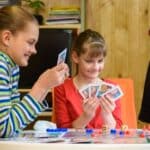School is just around the corner, and now is a great time to talk about head lice and kids. Head lice infestations affect millions of children each year and cause unnecessary stress for households. These facts parents should know about head lice and kids, it will help you respond effectively and reduce unnecessary worry when dealing with these common parasites.

Where and How Children Get Head Lice
Children typically get head lice through direct head-to-head contact with someone who already has lice. Schools, playgrounds, camps, and sleepovers create ideal opportunities for lice to spread from one child to another. Sharing personal items like hats, hair accessories, combs, and pillows can also transmit lice, though this happens less frequently than direct contact.
Common Myths About Head Lice
Many parents believe that head lice indicate poor hygiene, but this is false. Head lice infestations can happen to anyone regardless of cleanliness, social status, or hair length. In fact, lice often prefer clean hair because it’s easier for them to attach their eggs to clean strands.
Lice cannot jump or fly from person to person. They crawl from one head to another when children play closely together or share spaces where their heads touch. Also, head lice are species-specific parasites that only live on human heads and cannot survive on dogs, cats, or other animals.
Symptoms of Head Lice
The most obvious sign of head lice is persistent scalp itchiness and scratching, particularly behind the ears and at the nape of the neck. You might notice small red bumps or sores on your child’s scalp from scratching. Look for tiny white or yellowish eggs (nits) attached to hair strands close to the scalp.
Adult lice are small, grayish-brown insects about the size of a sesame seed. They move quickly and can be difficult to spot, so focus on finding nits when checking your child’s hair.
My son dealt with this last year and while his head didn’t necessarily itch, he did have a rash at the base of his neck. It took going to three different doctors to determine that he had lice in his hair. At first we thought, he was just having an allergic reaction to something because he did have some itching other places. After a round of steroids didn’t do the trick, we saw an allergist and then a dermatologist. The dermatologist figured it out and check his hair for lice. It was a traumatic experience for him. It took us a while to get rid of them. We think he was passing it back and forth with a friend.

Common Head Lice Treatments
Over-the-counter medicated shampoos containing permethrin or pyrethrin effectively kill head lice. Unfortunately, you can’t kill the eggs using home remedies. Laurie from Lice Center WI, chimes in on this Reddit post about lice. In her comment, it specifically states that you can’t kill the eggs at home.
But if you find that the over-the-counter shampoos or treatments aren’t working, as lice have become resistant, the only effective way to kill all the live lice at home is to use dimethicone (aff link). Follow package directions carefully, repeating treatment as recommended.
It is very important that you treat again after 10 days. It takes 11 days for lice to reach maturity and to be able to lay eggs again. If you wait longer than 10 days between treatments, you will need to start the process all over again. Treating too early can cause you to miss some newly hatched eggs. You can also remove nits manually using a fine-tooth comb after treatment to prevent reinfestation. After dealing with our recent infestation, I highly recommend getting this set of combs (aff link) to help comb out the lice and eggs.
Professional lice removal treatments are an effective option for severe infestations or when over-the-counter methods don’t work. Choose a lice specialist who can provide expert treatment and guidance, especially if initial treatments fail or if your child has sensitive skin. My son ended up going to a professional center to remove the lice once and for all. They do need to check all family members if you want the purchase guarantee to get rid of them during treatment.
Preventing Head Lice
Teach your children to avoid head-to-head contact with others during play and activities. Encourage them not to share personal items like hats, hair accessories, or combs with friends. Tie back long hair in braids or ponytails to reduce the surface area available for lice to grab onto. Regular hair checks can also help you catch infestations early. If you suspect lice and are unsure if your child has it or not, you can reach out to the school nurse. The nurse can do checks if needed. But frequent checks can keep head lice and kids nit free.
Stay Informed and Proactive
Head lice are a manageable problem that doesn’t reflect on your parenting or your child’s hygiene. Quick identification and proper treatment prevent lice from spreading to other family members and classmates.
Stay calm, remember these facts about head lice and kids that parents should know, and understand that head lice are a common childhood experience that millions of families successfully handle each year. With this information, your family can do the same.







